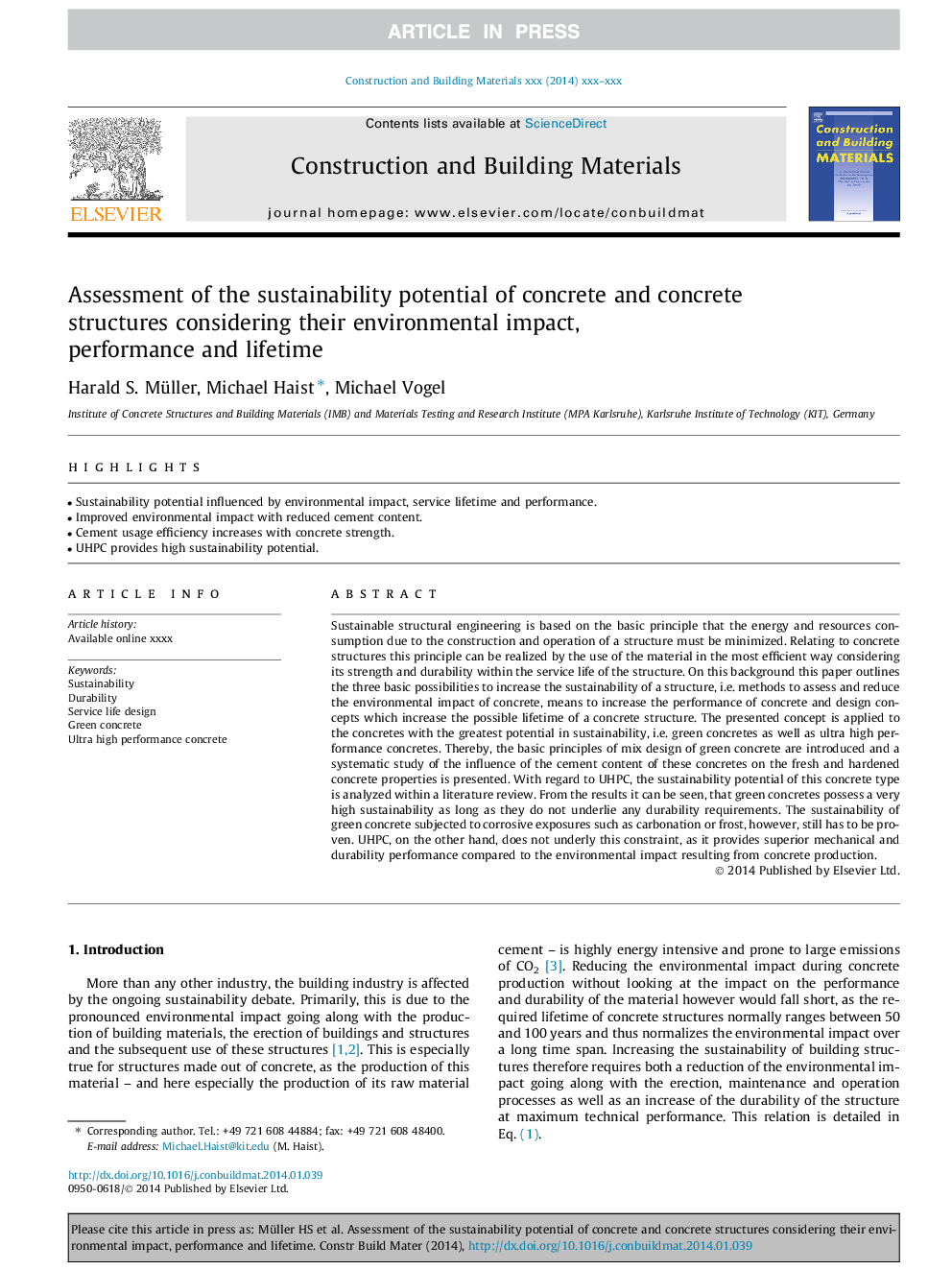| Article ID | Journal | Published Year | Pages | File Type |
|---|---|---|---|---|
| 10285150 | Construction and Building Materials | 2014 | 17 Pages |
Abstract
Sustainable structural engineering is based on the basic principle that the energy and resources consumption due to the construction and operation of a structure must be minimized. Relating to concrete structures this principle can be realized by the use of the material in the most efficient way considering its strength and durability within the service life of the structure. On this background this paper outlines the three basic possibilities to increase the sustainability of a structure, i.e. methods to assess and reduce the environmental impact of concrete, means to increase the performance of concrete and design concepts which increase the possible lifetime of a concrete structure. The presented concept is applied to the concretes with the greatest potential in sustainability, i.e. green concretes as well as ultra high performance concretes. Thereby, the basic principles of mix design of green concrete are introduced and a systematic study of the influence of the cement content of these concretes on the fresh and hardened concrete properties is presented. With regard to UHPC, the sustainability potential of this concrete type is analyzed within a literature review. From the results it can be seen, that green concretes possess a very high sustainability as long as they do not underlie any durability requirements. The sustainability of green concrete subjected to corrosive exposures such as carbonation or frost, however, still has to be proven. UHPC, on the other hand, does not underly this constraint, as it provides superior mechanical and durability performance compared to the environmental impact resulting from concrete production.
Related Topics
Physical Sciences and Engineering
Engineering
Civil and Structural Engineering
Authors
Harald S. Müller, Michael Haist, Michael Vogel,
